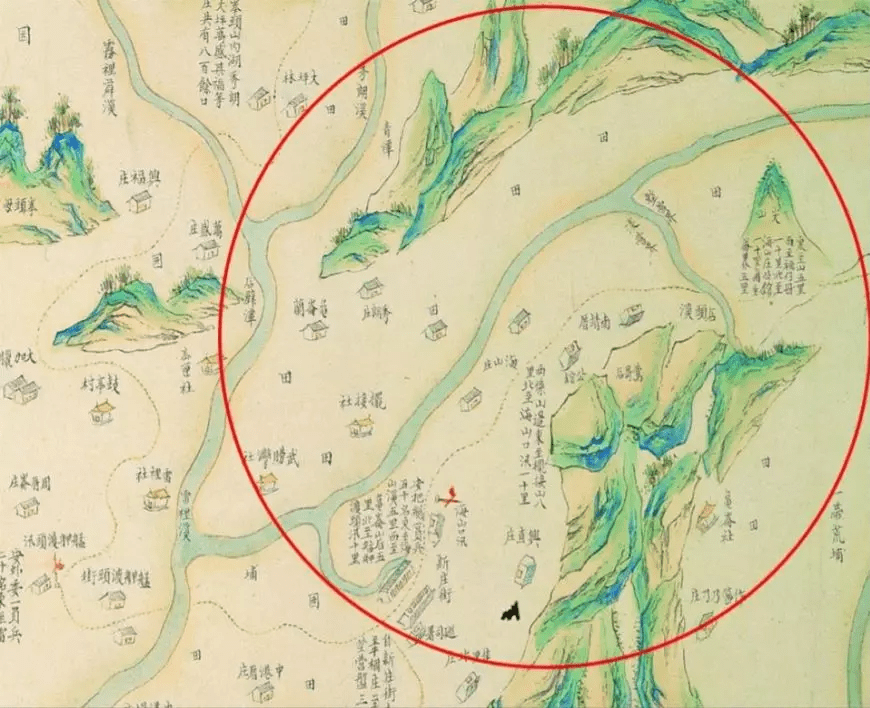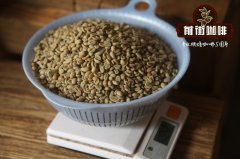Taiwan Coffee planting History with twists and turns in Coffee producing ∣

Taiwan's history of contact with coffee is not long, only more than 140 years, and it is not an ancient country with a coffee culture, and it is also the last country to play an international role in coffee production.
Today, however, Taiwan has a place in the global coffee arena. Not only have several coffee professionals won the global competition for all kinds of coffee, but Taipei has also been selected by BBC as the top six coffee cities in the world.
Taiwan has such a highly developed coffee civilization as fast as a rocket, which is caused by many social and cultural factors, but one of the factors that has helped to lay the foundation for Taiwan's coffee civilization is the seemingly insignificant history of coffee cultivation.
One wave: British businessmen throw stones to ask the way to northern Taiwan
Taiwan is located in the Tropic of Cancer and has a subtropical climate. There are many clouds in the high altitude area, and the microclimatic conditions are suitable for growing coffee. However, the primary cause of coffee cultivation in Taiwan was external stimulation, which was induced by the time and space conditions of the colonial era in the late Qing Dynasty.
In the 19th century, the Qing Dynasty was defeated in the first Anglo-French war. In 1858 (the eighth year of Xianfeng of the Qing Dynasty), the Qing government signed the Tianjin Treaty with Russia, the United States, Britain and France respectively. Anping Port in the south of Taiwan and freshwater port in the north were designated as the places to open the port.
Deji, a British businessman, came to Taiwan to do business because of the opening of Hong Kong. Deji is part of the British East India Company (English East India Company), which played an important role as a coffee trader in the history of British coffee development in the 17th century.
At that time, the manager in charge of Taibei Tanshui and Tadaocheng Deji Foreign Company found that Taiwan's climate was suitable for growing coffee. Based on possible international trade opportunities, he tried to introduce Arabica coffee seedlings from Manila, Philippines, in 1884 (the 10th year of the Qing Dynasty). They want to plant Arabica coffee. However, due to the sea voyage, the seedlings died before they arrived at the stage.
So in 1885, the foreign company imported coffee seedlings again, and selected the site at Haishan Castle near Taipei Fu City (including the three Gorges, Tucheng, and Banqiao areas of present-day Taipei County) to conduct a coffee trial in cooperation with tea farmers in Lengshuikeng. This is the earliest record of coffee cultivation in Taiwan literature.

Map of Haishan Castle during the Qing Dynasty, collection of the Palace Museum in Taipei
As the planting was still in the experimental stage, the entrusted farmers had just obtained some technical concepts about coffee cultivation from foreign firms, and coffee seedlings generally had to wait at least three years to bear fruit, and the seedlings could not be fully fed by . Before this trial could blossom and bear fruit, they encountered the Sino-Japanese Sino-Japanese War.
In 1895, the Qing government was defeated in the Sino-Japanese War, and the Treaty of Shimonoseki ceded Taiwan to Japan, which began the 50-year colonial period of Japanese occupation, while the trial of coffee was handed over by British businessmen to the Japanese colonial government.
Since the opening of Kachiichakan, the first coffee shop in Tokyo in 1888, the domestic coffee consumption population has increased rapidly, and the domestic demand has increased to Brazil, the largest coffee producer in the world, and Japan has been listed as the number one overseas target market.
During the period when Japan ruled Taiwan, coffee consumption reached a peak in the global market. Japan valued international coffee trade opportunities and its own consumer market, and began to grow coffee in the Ogasawara islands. With the pace of colonization, the scope of cultivation was extended to the colonial territories.
In the second year of Japan's occupation of Taiwan (1896), the breeding and production Department of the Civil Affairs Bureau of the Government House of Taiwan set coffee as a potential cash crop in view of the geographical and climatic conditions of Taiwan's subtropics, and began to investigate the cultivation of coffee on the island.
As coffee cultivation was listed as the policy objective of the Japanese colonial government toward Taiwan, Taiwan moved from small Buddhist cultivation during the British business period to an institutionalized trial planting, and the coffee industry took root in Taiwan through the promotion of the Japanese.
During the Japanese occupation of Taiwan, the development of coffee cultivation in Taiwan can be roughly divided into three stages:
90% discount: 1896-1910 sampling and trial planting of native species
According to a report in Taiwan Daily News in 1897, the head of the Taipei breeding course went to the homes of farmers who grew coffee during the British Shang Dynasty in Lengshui Pit in Haishan to explore the native species of coffee in Taiwan.
At that time, the seedlings collected from the farmer's coffee garden were first planted in the "Taobao Tea Laboratory" near Taipei City, which is located in the area of Banqiao in present-day Taipei County, and to the southwest is Haishan Castle, where the farmer is located.
In 1898, two bags of coffee seeds from the trial planting of coffee in Chaojiubao began to be distributed to various counties for trial planting. At that time, seamounts coffee was planted in Tainan, Kaohsiung Fengshan, Pingdong Port, Hengchun Shimen, and other places.
In 1902, Tian Dai-an, a production technician, set up a Hengchun breeding farm in Tainan Province. at that time, the native coffee breeding in northern Taiwan was destroyed by a typhoon, so the technicians of the Civil Affairs Bureau went back to Lengshui pit for sampling. and more than 200 coffee seedlings were sent south to the Hengchun breeding farm for cultivation.
During the period of Japanese occupation, Lengshuikeng Coffee from northern Taiwan went to Japan several times to participate in exhibitions, including the Tokyo Kangye Expo in 1907 (Meiji 43), and when it participated in the Kansai Prefecture and Prefecture Joint Expo in 1910 (Meiji 1940), it became famous for winning the fourth prize of Taiwan products.
Unfortunately, with the death of the main grower surnamed farmer, and because of the inconvenience of the British merchant Deji Foreign Company in expanding trade in Taiwan after the Japanese occupation of Taiwan, the parent company, the East India Company, was hit hard by leaf rust in the coffee garden in Southeast Asia, affecting the whole coffee industry. as a result, the coffee in the cold puddle began to decline because there was no one to follow.
Then came the "coffee production and industry" dominated by the Hengchun breeding farm in southern Taiwan.
80% discount: the rise of corporate coffee gardens from 1910 to 1934
When the Hengchun breeding farm was set up in 1902, not only cold puddles were introduced to grow coffee, but also coffee from Xiaoli and Hawaii were introduced.
The task of Hengchun breeding farm is to implement the policy of "breeding and developing industry" since the Meiji Restoration in Japan. The so-called production and development of industry is to achieve the financial autonomy goal of "rich countries and strong soldiers" by rewarding the process of westernization and industrialization in colonial areas, transplanting modern industries, promoting capital accumulation, and curbing imports and promoting exports.
The coffee in Hengchun breeding farm began to be harvested after the 38th year of Meiji (1905), and the harvest area reached more than 3A. By the time of Meiji 41 (1908), the output of coffee had reached more than one stone. Tian Dai technicians began to select seeds and send coffee seedlings to various places for trial production.
Due to the success of coffee breeding in breeding farms and the relaxation of private leasing of government-owned woodland at the Government House, Japanese enterprises or large farms have been attracted to invest in the production of coffee in Taiwan.
In 1912, the Bureau of breeding and production distributed coffee seeds to farmers in Taitung Hall for trial planting, which opened the prelude to coffee planting in eastern Taiwan. Among them, the Japanese boat Vietnamese who emigrated to Hualien chose the site of Fengtian Village in Hualien to grow coffee on a large scale and created their own brands to sell.
In 1930, the Japanese enterprise Sumitada products Co., Ltd. leased more than 400 hectares of land to grow coffee in Hualien Wuhe. It was the first company in Taiwan to grow coffee as an enterprise. The Taiwanese coffee produced in Sumita is not only sold in Japan, but also provided to the Japanese emperor to drink.
In 1931, the Japanese Kimura Key cafe Company also planted coffee in the areas of Chiayi and Yunlin Gukeng in northern Tainan, and Mizuho in Hualien in eastern Taiwan.
In 1930, the Tunan Industrial Joint Venture Society of Japan also chose the site of Yunlin Douliu Keng Village to grow coffee, and began to grow it on a large scale in 1934.

Tainan Co., Ltd. planted forest map in Tainan, in which coffee is listed.
70% discount: 1935 to 1942 government coffee was reclassified as a key crop
During the Japanese occupation era, the cultivation of coffee in Taiwan, from experimental planting to general cash crops, was then classified as a key cash crop to strengthen its popularization. an important watershed was the Tropical Industry Survey Association of Showa decade (1935).
In 1935, the 40th anniversary of Japanese colonial rule in Taiwan, the background of this industry survey was the drop in rice prices caused by 1930 bumper harvests of Japanese rice, and the breakdown of trade negotiations between Japan and the Netherlands in 1934, which made Japan actively prepare for war to the south.
The original agricultural policy of Taiwan under Japanese rule was to focus on rice, but due to time and space factors, rice was converted into war materials and was taxed to prevent dumping back to Japan. The success of coffee trial has made coffee stand out as a key cultivated crop that can actively earn foreign exchange in this industry survey.
Since then, coffee cultivation in Taiwan has received stronger support from the government and entered the stage of mass production.
By 1938, the cultivation area and harvest of coffee in Taiwan had reached a peak. Apart from Taipei, coffee was cultivated in Hsinchu, Taichung, Tainan, Kaohsiung, Taitung and Hualien. By 1942, the estimated amount of coffee planted in Taiwan had reached 1000 hectares, which was the heyday of coffee beans in Taiwan.
Frustrated: world War II brings coffee cultivation back to its original shape
When coffee cultivation in Taiwan was about to be prosperous, on December 7, 1941, Japan secretly attacked Pearl Harbor and uncovered the war in the Pacific. More than 300,000 young people from Taiwan were forced to join the army, coffee gardens were not taken care of, and the war also affected maritime trade. Coffee cultivation in Taiwan has been declining since 1943.
When Japan was defeated in 1945, the Taiwan Provincial Department of Agriculture and Forestry took over all Japanese-funded businesses and land in Taiwan. Coffee was not listed as a major special crop, and the prosperity of the coffee industry, which finally blossomed and bear fruit, was not there. Most coffee plantations were converted to forest land or other crops. Ka farmers also slowly switched to rice, and the coffee industry entered a 50-year dormancy period after the Kuomintang government came to Taiwan.
Although the cultivation and development of coffee in Taiwan has been thwarted, Taiwan's coffee industry, which was laid down during the Japanese occupation era, has trained a group of Taiwanese who love coffee. With the support of these coffee lovers, although coffee cultivation has declined as a result of the war, coffee culture has taken root in Taiwan and has become the cradle of Taiwan's boutique coffee kingdom today.
Transcribed from the coffee commune
Important Notice :
前街咖啡 FrontStreet Coffee has moved to new addredd:
FrontStreet Coffee Address: 315,Donghua East Road,GuangZhou
Tel:020 38364473
- Prev

Introduction of African Kenyan AA grade coffee coffee flavor description brewing parameters of hand-made Kenyan coffee
AA in Kenya is grown above 2000 meters above sea level and is considered to be one of the best coffee beans in the world. High-altitude areas mean that coffee beans grow more slowly than low-altitude areas, providing more nutrition, giving them more time to develop taste and maturity. Coffee beans from the highlands of Kenya taste mellow.
- Next

Is the coffee acid from the Kenyako and special treatment plant the best coffee from Mulanga?
Kenya lies between Ethiopia, which is famous for Mocha in the north, and Tanzania, which is famous for Kilimanjaro in the south. It is not well known in Japan because it is expensive compared with the two countries, but in recent years, Japan has also been highly valued by buyers who require high quality. It is regarded as one of the best quality coffee in the world. The reason for high quality is soil.
Related
- Does Rose Summer choose Blue, Green or Red? Detailed explanation of Rose Summer Coffee plots and Classification in Panamanian Jade Manor
- What is the difference between the origin, producing area, processing plant, cooperative and manor of coffee beans?
- How fine does the espresso powder fit? how to grind the espresso?
- Sca coffee roasting degree color card coffee roasting degree 8 roasting color values what do you mean?
- The practice of lattes: how to make lattes at home
- Introduction to Indonesian Fine Coffee beans-- Java Coffee producing area of Indonesian Arabica Coffee
- How much will the flavor of light and medium roasted rose summer be expressed? What baking level is rose summer suitable for?
- Introduction to the characteristics of washing, sun-drying or wet-planing coffee commonly used in Mantenin, Indonesia
- Price characteristics of Arabica Coffee Bean Starbucks introduction to Manning Coffee Bean Taste producing area Variety Manor
- What is the authentic Yega flavor? What are the flavor characteristics of the really excellent Yejasuffi coffee beans?

